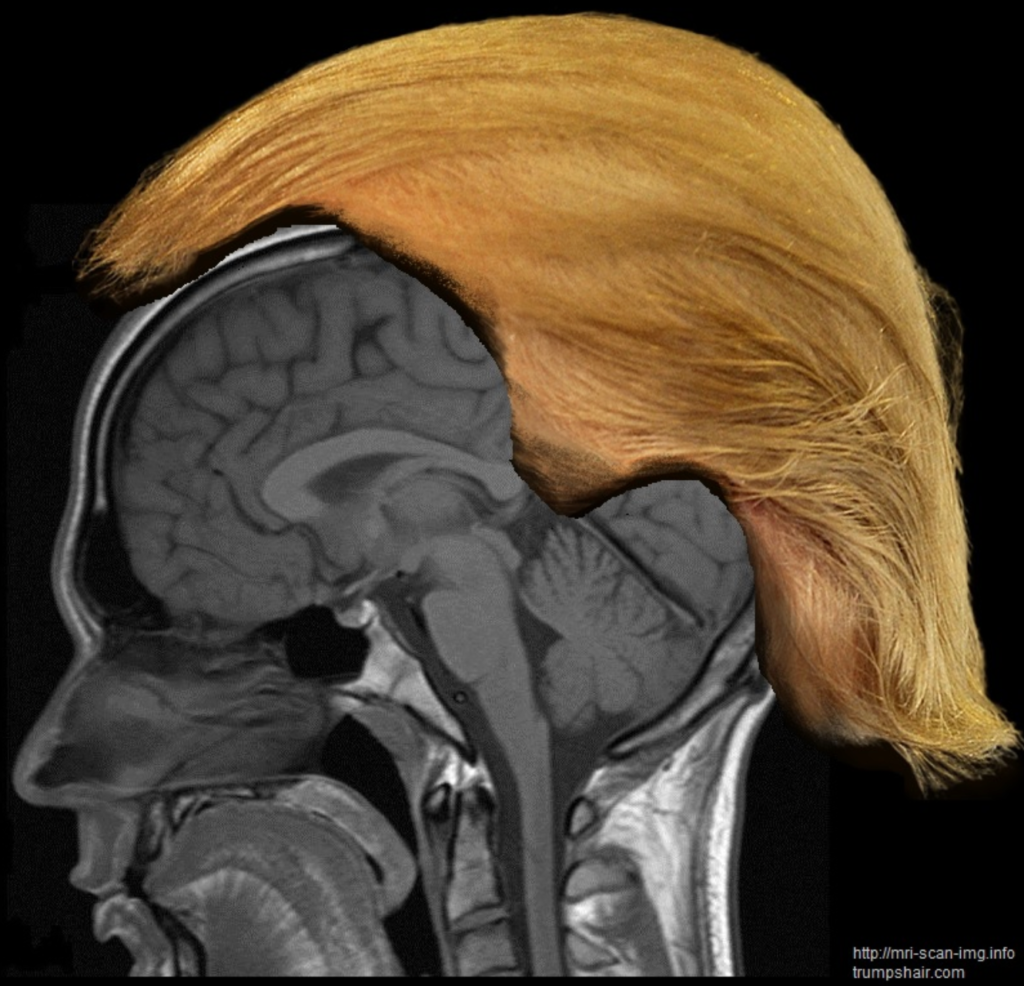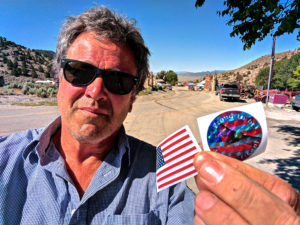Guest post by Noel Holston
Donald Trump should donate his body to science.
Laugh if you will. I realize it’s more than a little ridiculous, the notion that the most science-averse U.S. President of all time would bequeath his corpse to the medical school at Harvard or Emory or the Perelman School of Medicine at the University of Pennsylvania, his alma mater.
But I’m serious. He’s an unusual human specimen, and he owes it to the nation — to the world – to make himself available for posthumous study.
First of all, there’s his body, the ample corpus that, clothed in white tie and tails for his recent state dinner with British royalty, led wiseacres and fashion critics to suggest that he wouldn’t be out of place leaping for mackerel at a Sea World show pool.
What life-extending secrets could medical science learn about longevity, energy and endurance from dissecting an overweight septuagenarian who stays up half the night watching cable news and tweeting angry insults, gets little exercise beyond walking to Air Force One and his golf cart, and eats mostly the sort of fatty fast foods that are the foundation of America’s obesity epidemic?
How is it that a walrus with the added weight of the world on his shoulders can make it through day after day of cabinet meetings, sit-downs with foreign dignitaries, medal ceremonies, interviews, photo ops, and campaign rallies without even taking regular naps? His performance on such occasions – his logic and lucidity – may leave many of us scratching our heads and grinding our teeth, but you kind of have to admit that his stamina is impressive.
I don’t know about you, but I’m two years younger than he is, close to the ideal weight for my height, an exercise buff and a healthy eater. I take a siesta most days and still can’t stay awake for Stephen Colbert or Jimmy Fallon. And I don’t have the added stress of Nancy Pelosi or Rachel Maddow talking about jailing me.
More challenging, but also more rewarding potentially, would be the study of Trump’s brain. He says he’s a genius, and a stable one at that, but his declarations of mental prowess sometimes seem at odds with his erratic behavior, his childishness, and his very, very limited vocabulary. What could dissections and tissue scans discover about the wiring of his brain?
Some people believe that Trump is a narcissist, a liar, a con artist, a crook, or even a psychopath. He says he isn’t, and that he only interrupted his lucrative business career to take a relatively low-paying government job because America’s greatness needed restoration. Objective scientific study of his brain could, among other things, settle such debates for posterity.
In an article for the website Live Science, writer Clara Moskowitz reported about a Mayo Clinic study of people with antisocial personality disorder, a condition commonly found in criminals and characterized by an indifference to laws and the rights of others.
“Brain scans of the antisocial people, compared with a control group of individuals without any mental disorders,” she wrote, “showed on average an 18-percent reduction in the volume of the brain’s middle frontal gyrus, and a 9 percent reduction in the volume of the orbital frontal gyrus – two sections in the brain’s frontal lobe.”

Another study Moskowitz cited compared the brains of like numbers of psychopaths to non-psychopaths. “In the psychopaths,” she wrote, “the researchers observed deformations in another part of the brain called the amygdala, with the psychopaths showing a thinning of the outer layer of that region called the cortex and, on average, an 18-percent volume reduction in this part of brain.”
“The amygdala is the seat of emotion,” she was told by a member of the research team, Adrian Raine, of the Department of Criminology at the University of Pennsylvania. “Psychopaths lack emotion. They lack empathy, remorse, guilt.”
A close look at Trump’s orbital frontal gyrus and his amygdala could add to our understanding of how he came to be who he is – and possibly exonerate him.
Finally, there’s the fame factor. Very few celebrities have donated their bodies to science. Not only could Trump join that short list, but he would be also the first President. He really ought to do it. Let’s hope he does.
The big reveal could be the basis of a prime-time special, like The Mystery of Al Capone’s Vault. The ratings would be huge.
Note: Noel Holston is a freelance writer who lives in Athens, Georgia. He’s a contributing essayist to Medium.com, TVWorthWatching.com, and other websites. He previously wrote about television and radio at Newsday (200-2005) and, as a crosstown counterpart to the Pioneer Press’s Brian Lambert, at the Star Tribune (1986-2000). He’s the author of “Life After Deaf: My Misadventures in Hearing Loss and Recovery,” which is scheduled for publication fall of 2019 by Skyhorse.

 So I see “Magnum P.I.” is the latest geezer hit to get the re-boot treatment. Fans of TV as it once was already have a new “Hawaii 5-0” up and running, have seen “Roseanne” rise from the dead … die … and be born again (as “The Connors”, without the queen crazy) are awaiting the restoration of “Murphy Brown.”
So I see “Magnum P.I.” is the latest geezer hit to get the re-boot treatment. Fans of TV as it once was already have a new “Hawaii 5-0” up and running, have seen “Roseanne” rise from the dead … die … and be born again (as “The Connors”, without the queen crazy) are awaiting the restoration of “Murphy Brown.”